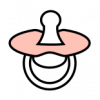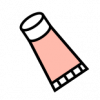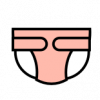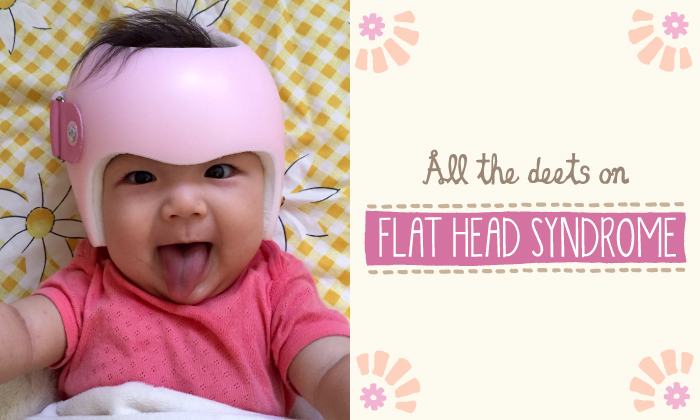
Curious to know more about a common (and treatable) condition effecting 1 out of every 60 births? Everything you need to know about Flat Head Syndrome is here, mama!
As mamas, we worry (a LOT) about our kids, so if our bubs are diagnosed with something called Flat Head Syndrome, it’s understandable that we’d be feeling pretty anxious. That’s why we sat down with co-founder and certified Orthotist Susanna Koh from Orthopaedia to give us the low down on this condition, including what we as parents can do to reverse it!
Hi Susanna! So, how did you get into orthotics in the first place?
Well, after graduating from the University of Salford in 2000 with first class honours and gaining an MSc in Assistive Technology at Kings College London in 2004, I moved back to Singapore where I managed the Orthotics and Prosthetics & Podiatry clinical departments in Tan Tock Seng Hospital. I’m proud to say I was Singapore’s first female local prosthetist and orthotist!
Why did you decide to open Orthopaedia?
My co-founder, Heidi Mak, and I founded Orthopaedia in 2014 because we wanted to provide families timely and specialised orthotic care, particularly in the area of Flat Head Syndrome. We truly believe in early intervention in children with orthotic needs and we are passionate about building awareness and debunking myths about orthotics.
Orthopaedia is our way of committing to that passion — we want families in Singapore to obtain the best clinical outcome in the correction and optimisation of their bodies using well-established research and resources.

What exactly is Flat Head Syndrome?
Flat Head Syndrome, or Plagiocephaly, is a condition characterised by the flattening on one side of the back of the head. This is due to the distortion of the skull plates. 80% of skull growth takes place in the first year of life and slows after the first 12 to 18 months. The skull fuses at around 18 to 24 months.
What are the causes of Flat Head Syndrome (FHS)?
The current advice is “back to sleep” where parents are recommended to place babies on their backs to sleep to reduce to risks of Sudden Infant Death Syndrome (SIDS). While this is smart advice, we’ve seen a surge of FHS, with the American Academy of Pediatrics reporting the condition in one in every 60 live births. FHS is also pretty common in multiples and can be a result of a traumatic birth. Basically, FHS often results from external forces being applied to the soft infant skull.
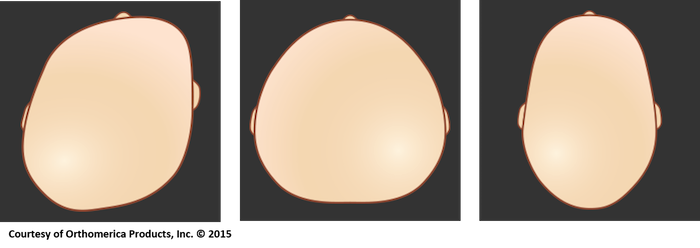
How can I tell if my baby has FHS?
You can start by doing a quick check at home by looking down on your baby’s head from above and compare what you see with the diagram above. Tip: Do the test after bath time when bub’s hair is wet!
If you’re concerned, get in touch with your paediatrician and an orthotist from Orthopaedia. We’ll conduct a head shape examination to ascertain whether your baby has FHS and, if so, determine exactly what type is present. During the examination we use a craniometer measurement, an international medical standard of measurement used to determine the severity of flat head.

What types of FHS are there?
There are actually three different types of misshapen heads:
Plagiocephaly, is the most common type of FHS. It refers to a misshapen (asymmetrical) shape of the head from repeated pressure to the same area of the head.
Brachycephaly is an abnormally wide head shape with flattening back of the head. The head can be very high at the back causing a bulging forehead. Asymmetrical Brachycephaly is a common sub-type of brachycephaly where the head is excessively wide and also asymmetrical.
Scaphycephaly is characterised by a long and narrow head shape, sometimes caused by consistent positioning of the baby on his or her side.
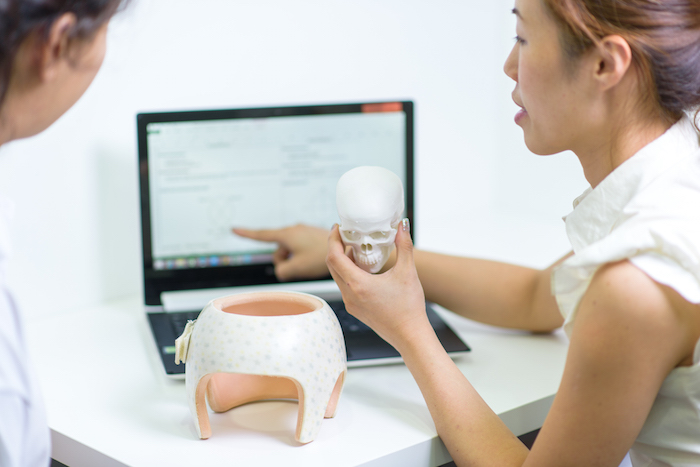
How can you treat the condition?
We use Repositioning or Cranial Remoulding Helmet Therapy. The golden treatment window is between four to eight months of age, over a three to six month treatment period, since the baby’s soft spot is still open and the neck is strong. Babies between eight to 12 months old can still be treated but may require a longer period of treatment time. It’s important to note that therapy isn’t effective once skull growth is complete.
With Repositioning Therapy, we advise changing or alternating the position of your baby’s head to allow an even weight distribution. Repositioning is often effective for prevention of flat head during the first three to four months.
If repositioning doesn’t bring improvements, then we can consider Helmet Therapy.

What is Helmet Therapy?
Helmet Therapy is used to correct the baby’s skull shape. The helmet works by leaving a gap where the flat spot allows skull growth rather than flattening it. The helmet also redirects growth from the baby’s growing skull with gentle, constant pressure.
Upon the assessment and decision to proceed with helmet therapy, Orthopaedia uses an android camera to take images of the baby’s head to build a 3-D model which is then sent to the US for fabrication.
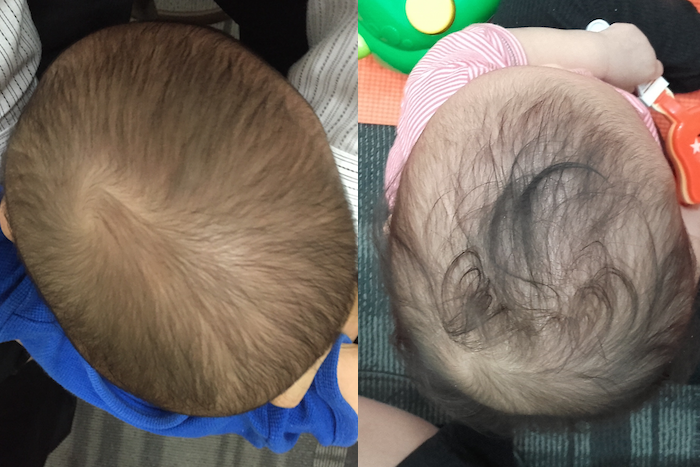
Helmet therapy has proven results – they’ve been used to treat plagiocephaly since the late 1980s – however, each family should take several factors under consideration when evaluating their child’s final outcome.
All in all, Helmet Therapy is about a three to five month process, with check-ups every month. Changes are evident dependent on the baby’s age. Check out the amazing results for one bub in the before (left) and after (right) pic above!
Why is Orthopaedia the best choice for diagnosing and treating Flat Head Syndrome in Singapore?
That’s easy! We are the only centre in Singapore to diagnose and measure with a camera, as well as build the highest quality helmets customised for your baby’s specific needs. We can also help with other issues, including bow leggedness, flat feet and scoliosis.
Thank you for the info, Susanna and the Orthopaedia team! If you would like your bub evaluated for Flat Head Syndrome or simply want to learn more, get in touch with Orthopaedia – contact deets below!
Orthopaedia, 1 Commonwealth Lane, #08-16, One Commonwealth, Singapore 149544, (+65) 6479 4738, www.orthopaedia.com.sg
 View All
View All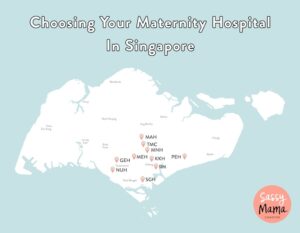
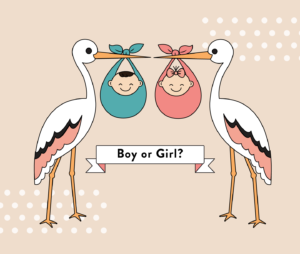

 View All
View All


 View All
View All

 View All
View All
 View All
View All


 View All
View All



